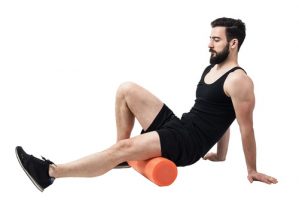Articles
SIRC articles provide evidence-based and actionable insights from sport researchers, athletes, coaches, sport organizations and thought leaders to advance sport in Canada.
Featured Article
Concussions in Sport: What Parents Need to Know About the Youngest Athletes
Each year in Canada, more than 200,000 athletes experience a concussion. The numbers are striking, and so is the fact that until recently, the youngest athletes were almost absent from research and public conversation about these injuries. Dr. Miriam Beauchamp is a professor at the University of Montreal, a researcher at Sainte-Justine Hospital, and Canada…

Search Articles

Core strength and stability training is performed by most if not all competitive athletes these days. In fact it is one of the few training forms that is effective for all sport disciplines. The core is central to all athletic...

Regulating Pre-performance Psychobiosocial States with Music
December 6, 2017
|
SIRC Highlights from the Study Study background: For athletes at high levels, the ability to control one’s mind in the moments leading up to performance is a key element of pre-performance preparation. Music has been used by many athletes as...

Workplace Wellness
November 29, 2017
|
According to research by the Conference Board of Canada, workplace health and wellness was estimated to be a booming $6 billion industry and set to permeate 78% of workplaces in 2016. This trend has continued to grow throughout 2017 with...

Don’t Get Tied Up In Knots – Try Rope Training
November 22, 2017
|
Perfecting a good workout routine that balances aerobic, anaerobic and strength training is a great goal for all around fitness. However, sometimes your body settles into a rhythm and fewer gains are seen. Changing up your routine and incorporating different...

Rolling out the benefits of Foam Rollers
November 15, 2017
|
Foam rollers have become pretty mainstream over the last few years. Athletes swear by this piece of equipment to help keep muscles loose and limber, and to help in muscle recovery and increased performance. Every day fitness goers are also...
Remote vs Onsite Employees: Challenging the notion that one size fits all
November 14, 2017
| Nancy Rebel
Workplaces have changed and provided more employee options over the last few year both in physical space design, the flexibility in hours employers provide, and the options to work from offsite or on. These changes are in response to employers...

Fall Foods for the Athlete
November 8, 2017
|
With the miracle of growing techniques available these days, many foods are available all year ‘round. But most foods usually taste better when they are in season and are a great source of vitamin and nutrients that will keep your...

Next Level Coaching – Building an Effective Leadership Style
November 1, 2017
| Michelle Caron
Coaches, in a nutshell, are educated leaders who influence people to work towards a specific goal. Effective leadership in sport requires knowing the best approach for assisting players based upon their level of skills and motivation, and transforming that knowledge...

Lift like a Girl – Weightlifting for Women
October 25, 2017
| Michelle Caron
With the ever increasing popularity of Crossfit, obstacle course racing (Spartan, Warrior Dash and mud runs) and a few great marketing campaigns – check out #liftlikeagirl and This Girl Can – women are heading to their local gym and hitting...

Exercise Offers Protection against Osteoarthritis
October 18, 2017
| Lily Dong, SIRC
Osteoarthritis is the leading cause of disability among older people. Previously thought to have been the result of joints wearing out, this chronic degenerative joint disease is the outcome of a combination of different factors. Pain, inflammation, stiffness, muscle weakness,...